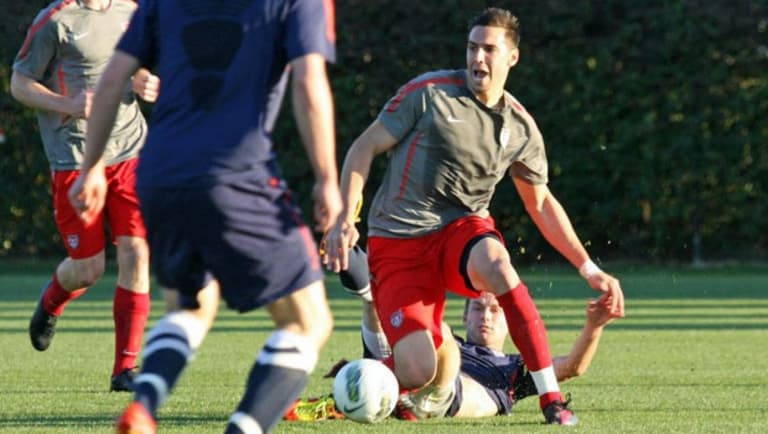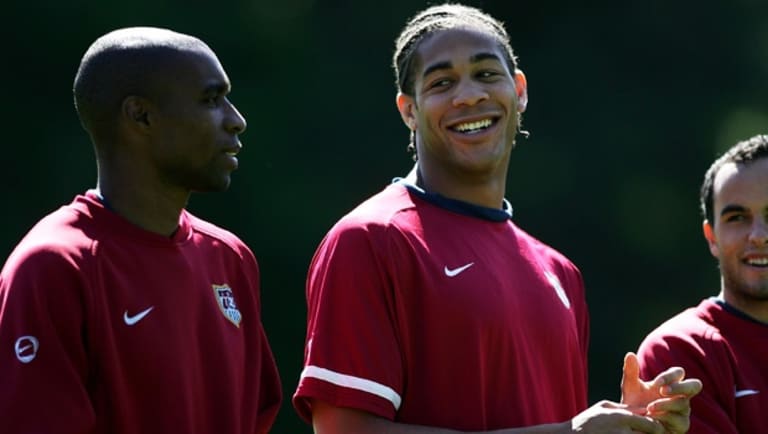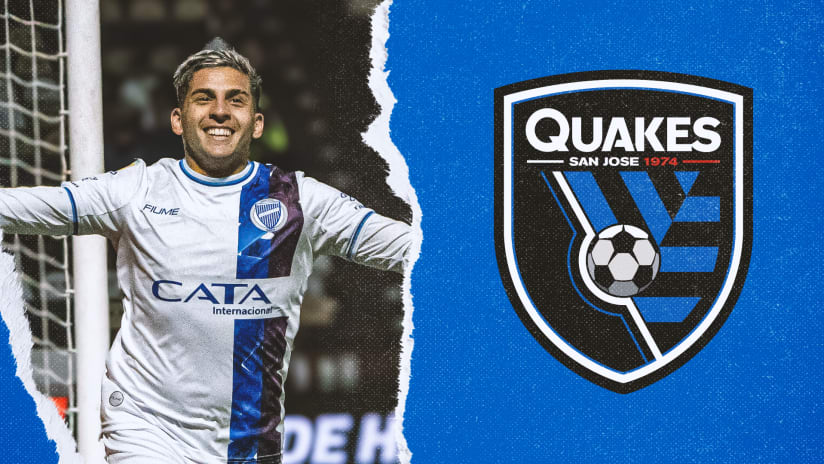TORONTO — Who will start at center back?
In the wake of last week’s 4-1 loss to Brazil, that’s one of the most poignant questions facing the United States national team. It’s not only a question heading into Sunday evening’s friendly against Canada at BMO Field (7 pm ET, NBCSN/Sportsnet, live chat on MLSsoccer.com), but also for this week’s 2014 World Cup qualifiers and beyond.
“It’s a very live situation right now,” US manager Jurgen Klinsmann said on Saturday. “The guys see that. They taste it every day, and it’s a good thing.”
Competition at the center back position is arguably fiercer than it ever has been before. Carlos Bocanegra, Oguchi Onyewu, Clarence Goodson, and Geoff Cameron — the four center backs with the team currently — arguably make up the upper echelon of choices for Klinsmann.
But there are others: Nominal right back Michael Parkhurst, who also is with the US squad right now, has lined up in the middle previously, and the LA Galaxy’s injured Omar Gonzalez and FC Dallas’ George John are waiting in the wings for their next shot to showcase their abilities.
On the record, everyone will tell you there is no pecking order.
“There’s competition for everyone,” Bocanegra said. “You know, it’s the national team! You have good guys coming in trying to win their spot every game. … No one is a shoe in. No can come in and expect to play.”
WATCH: Klinsmann clarifies "nasty" remarks
The Incumbents
Bocanegra’s humility notwithstanding, most observers know that Bocanegra — “our captain,” as Klinsmann refers to him — can, in fact, expect to play if healthy. At 33, his experience (two World Cups, 100-plus caps), his leadership, and his still formidable skills make him, in many ways, a no-brainer to start.
After Bocanegra, though, things get murkier. A few years ago, when he was winning championships in Belgium and manhandling opposing targetmen, Onyewu’s name would’ve been in ink alongside Bocanegra’s. But long-term injuries, a lack of playing time, and a few subpar performances for the national team have taken the shine off some.
Still, Gooch’s credentials and abilities keep him squarely in the conversation. He has 64 caps and appeared in two World Cups. In hindsight, he probably should not have been on the field at the 2010 World Cup, as he didn’t look truly recovered from the patellar tendon rupture that he suffered in qualification. But since then, he has gotten his career back on track, showing well for Sporting Lisbon, and the fact remains that there are few center backs in the world, let alone the US, with the strength to handle the modern game’s most powerful forwards.
Not that it helped him against Brazil last week. When tasked with marking Porto’s massive striker Hulk, Onyewu did fine. But he was caught out dreadfully on other plays when his physical skills were irrelevant, namely, the handball for the penalty and the step-up that would’ve pulled Alexandre Pato offside on the fourth Brazilian goal.
The Challengers
Onyewu’s shaky performance against Brazil contrasted greatly with the solid one put in by Cameron against Scotland. Obviously, any comparisons between the two performances need to take into account the competition: Brazil are a world powerhouse; Scotland are not.

Still, Cameron’s speed and passing ability were clearly evident against the weak Scots. He did have an own goal on an unfortunate redirected cross, but for the most part, he and Bocanegra displayed a decent chemistry, covering for each other, holding the line, stepping up to join the midfield at the right times. It would’ve been interesting to see the same duo face the Brazilians to test Cameron — and his partnership with Bocanegra — but Klinsmann is interested in assessing all his options.
“Every position, we have certain expectations,” Klinsmann says. “We want to have every position played in a certain way. In order to see the bigger picture, we need to try things out. In training games, or ideally, in real games, we see if they adjust to what we ask them to do.”
Clarence Goodson seems to have adjusted very well since Klinsmann took over the US team last summer. The Brondby star has earned four caps under Klinsmann, the last one coming in the win against Italy. His composure on the ball is par with Cameron’s, and his ability in the air, both defensively and in the attack, compares with Onyewu’s, but his positional sense distinguishes him from his rivals. Simply put, Goodson is rarely caught out.
But even with Cameron and Goodson showing well, their relative lack of international experience probably keeps them lower on the depth chart than Bocanegra and Onyewu. At least that’s how Cameron sees it.
“You have Clarence and myself, then you have Gooch and Carlos,” Cameron says. “Obviously, Carlos is the captain, and Gooch is up there with him. But every day you’re fighting for a position. It helps out the team because you’re pushing one another and raising the level a little bit more.”
“We need to keep this competition alive,” Klinsmann says. “We need to tell them every time we get into camp that there is a chase for spots. So we want to have the guys who don’t start to put the other guys into pressure.”
The Live Situation
The US center back position has certainly evolved. In the early 1990s, the Alexi Lalas-Marcelo Balboa tandem saw success with a combination of size and physicality. They were big, competitive, and nearly unbeatable in the air. But no one expected them to pull any Beckenbauer moves playing out of the back.

Eddie Pope’s emergence in the late ’90s ushered in a new era for US center backs. A shoe-in for the US when healthy, Pope displayed a gracefulness and tactical understanding that few of his predecessors possessed. He still had the strength and never-say-die attitude that has long been the hallmark of the American player, but he seemed like the prototype of the next-generation of American center back, and he lay the foundation for today’s “live situation.”
The truth is, American center backs have come a long way. It is no longer good enough simply to give effort for 90 minutes, excel in the air, and tackle hard. Now, center backs must have the ability to play the ball out of the back. Vision, passing, and tactical awareness are paramount if the US is to contend with the traditional powerhouses, or even the terrific current Mexico side.
According to Bocanegra, the US is getting closer and closer to the giants in world, and the current competition for spots at center back and other positions is the best indication of that.
“It’s hard all over the field, not only at center back,” Bocanegra says. “I think it just shows that on almost every position on the field, we’re getting better as a country. I’ve seen the evolution as I’ve gone on. There’s a lot more competition at each place. It’s pushing us to the next level. Hopefully, we can just get that extra edge where we’re consistently competing against the top teams in the world.”














